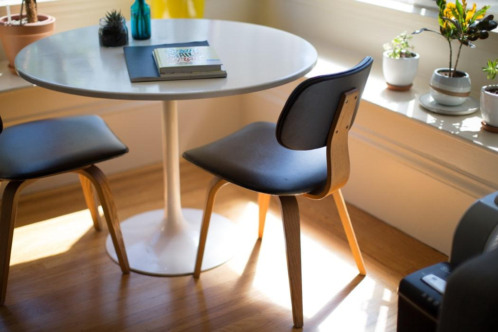
The moral of mindfulness is to take care. Find joy in the ordinary, foster relationships, and listen to your gut. This trifecta will open your eyes and ears, your mind and heart to a deeper meaning of life.

From mundane to mindful
Everyday chores can feel tedious. And although they’re often low-energy tasks, like washing dishes and dropping kids off to sports practice, the monotony can take a toll on our energy and mood.
However, you can turn these chores into something enjoyable if you start paying more attention to the task at hand.
It first starts with slowing down. Rushing through each task will make you all the more stressed and tired. In fact, chores like making the bed can actually engrain more discipline into your daily regimine and kick start your day with a boost of productivity.
Additionally, the next time you clean the dishes, focus the texture of each dish, the temperature of the water, and the smell of the dish soap. If an appliance isn’t working correctly, take the time to address the problem. Completing home projects on your own can plant a seed of confidence and enhance your sense of pride.
Or tomorrow, when you’re waiting in line to pick up your children from school, turn up the radio and roll down your window, even if it’s a bit chilly. Put your car in park and take a look around. Notice the new recess equipment and say hello to another parent you don’t usually talk to.
Make connections
In our busy lives, it can be a challenge to make time for quality time with loved ones. You can practice mindfulness through active listening. Listening cultivates focus, intention, and awareness.
Avoid getting distracted by the future or the past while communicating and simply work on just “being” with the other person. If you’re enjoying conversation in-person, put your phone down and turn off the television. Make eye contact, practice patience by resisting the urge to cut them off mid-sentence, and respond with thoughtful reactions and questions.
Be alone
And as there’s a time for togetherness, there’s also time to be alone. Take today to listen to your mind and body. Tune into how you’re feeling. If you’re body is aching or if you feel fatigue, indulge in an afternoon nap.
If you’re stressed, make a to-do list and put it aside for a moment. Leave the stress on the paper while you take a short break to reset. Physically move to another room than where you left the to-do list and meditate for a moment or two.
This doesn’t mean you have to sit cross-legged on a floor pouf and omm your way through the next hour. Meditation can be whatever you want it to be. That could be merely closing your eyes for a few minutes and taking a deep breath. Or it could mean gazing out the window with a cup of tea.
Whatever refreshes you will help you gather the energy to tackle that to-do list and put your best foot forward today, tomorrow, and forever more.
Guest Contributer: Paige A. Mitchell. Paige is a freelance writer an d reviewer.
Photo Credit: Unsplash



